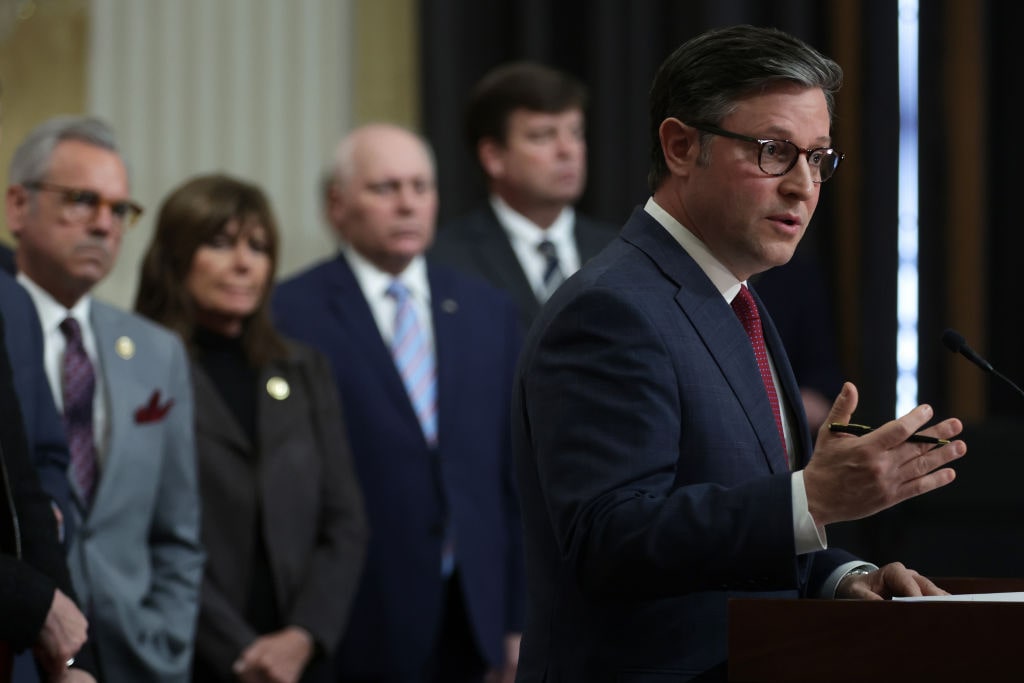A package of six full-year funding bills has cleared the US House ahead of the Friday deadline. After a fourth continuing resolution for fiscal year 2024, Friday, March 8 was the deadline to either pass the first half of the 12 annual spending bills, punt with yet another short-term stopgap resolution, or shut down part of the federal government. Despite some fierce resistance from the Freedom Caucus, the full-year funding bills – which had been negotiated between House and Senate leadership and the president – passed the House 339-85. But that was the easy part.
Fast-Track Funding
 The 1,050-page “minibus” package was passed Wednesday, March 6, using a fast-track process known as “suspending the rules,” which requires a two-thirds majority to pass. On the vote to suspend the rules, 132 Republicans joined almost all the Democrats – 207 – for a total of 339 in favor. Just two Democrats and 83 Republicans opposed, with four from each party not voting.
The 1,050-page “minibus” package was passed Wednesday, March 6, using a fast-track process known as “suspending the rules,” which requires a two-thirds majority to pass. On the vote to suspend the rules, 132 Republicans joined almost all the Democrats – 207 – for a total of 339 in favor. Just two Democrats and 83 Republicans opposed, with four from each party not voting.
The mostly bipartisan agreement appropriates $450 billion to keep the Departments of Agriculture, Commerce, Energy, Interior, Housing and Urban Development, Justice, Transportation, and Veterans Affairs running through September. Senate Majority Leader Chuck Schumer (D-NY) said shortly after the House passed the funding bills that the Senate would hold a vote “this week” so that these programs could get their money “with time to spare before Friday’s deadline.” As such, it seems likely to be one of the first things the upper chamber will address when it reconvenes at 10 a.m. Eastern today.
The Hard Part Ahead
All 100 senators would have to agree to hold the vote, however, in order to get it on the docket in time to avert the partial shutdown that will otherwise begin at 12:01 a.m. Saturday – and that’s far from guaranteed. Thirteen GOP senators voted against last week’s continuing resolution, and any one of them could oppose today’s minibus. Then there’s Sen. Chris Murphy (D-CT), who said Wednesday he would vote against this spending package over a Republican-backed provision he argues could let more “mentally ill individuals” purchase guns. That particular measure was touted by Republicans as a way to bolster gun rights for veterans, and anything that increases the right of any people to keep and bear arms is likely to draw the ire of Democrats – as are the cuts to the FBI, the EPA, and the ATF.
Still, despite the fact that these six bills took nearly half the fiscal year to pass even half of Congress, and despite the dark clouds on the horizon in the Senate, this portion of the funding process was considered the easy part. The other half, which must be addressed before a separate March 22 deadline, includes funding for the Departments of Defense, State, and Homeland Security, which are expected to be more contested.
The Vicious Cycle
The annual funding fight seems to have settled into a vicious cycle. Each year, lawmakers on both sides of the aisle demand more tax dollars to keep their favorite programs afloat – whether that be defense and border security or so-called green initiatives and the nanny state – while the relative few who truly wish for a smaller government try to balance the books. Then, after eventually failing to pass a balanced budget, the bill comes due – and we have the annual debt ceiling battle. All opposition to the previous appropriations side of the cycle are forgotten by statists, who argue for an increase – or suspension – of the debt limit by saying something like, “you wanted the funding, now you have to pay the bill!”
It’s either agree to the funding bills or shut down parts of the government, with only the band aid of continuing resolutions to buy time as an alternative. Then it’s either raise the borrowing cap or risk America defaulting on its debts. Rep. Chip Roy (R-TX), one of the Freedom Caucus members who opposed this round of spending, said: “I keep waiting for the fight that I keep getting told is going to happen tomorrow, right? It’s like … one of these losing sports teams says wait till next year, right? ‘Oh, trust me, elect us in November. We’ll do it. Next time.’ How about we do it now?” What happens when too many say “How about we do it now?” Will the statists allow a balanced budget – or will they take their toys and go home, leaving a mess of a government in partial shutdown mode?




